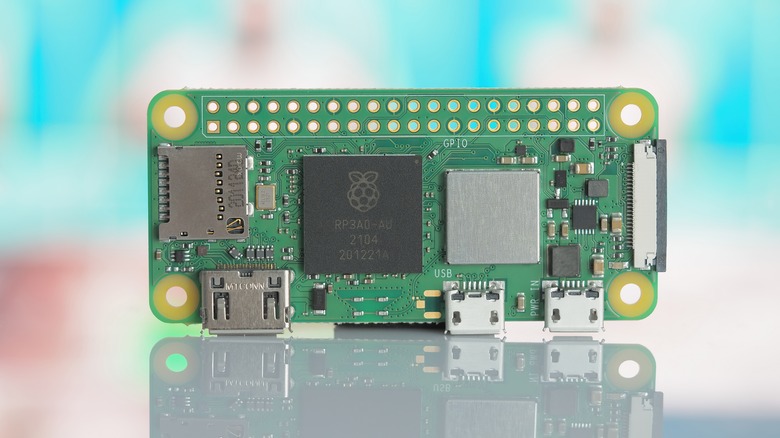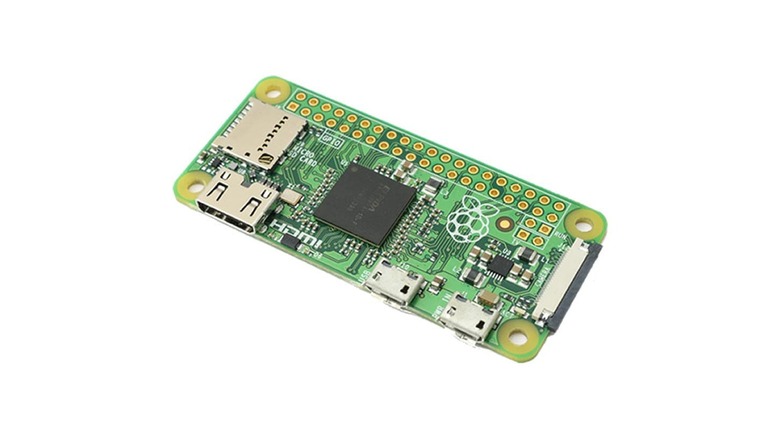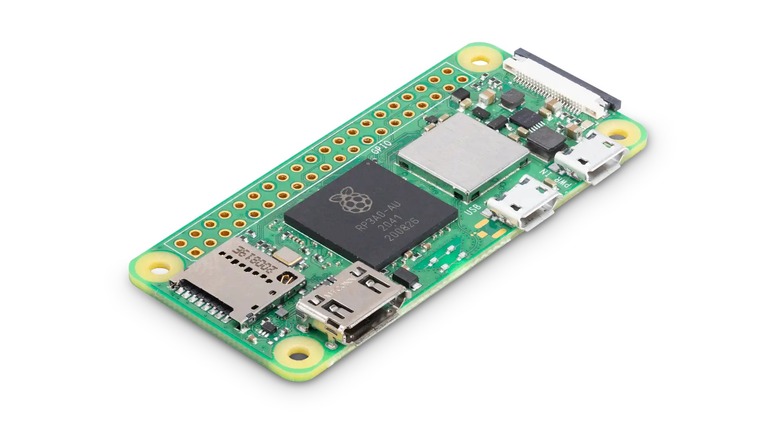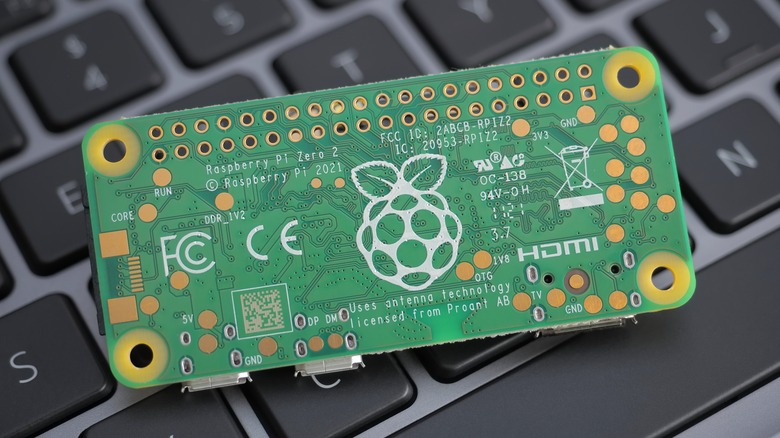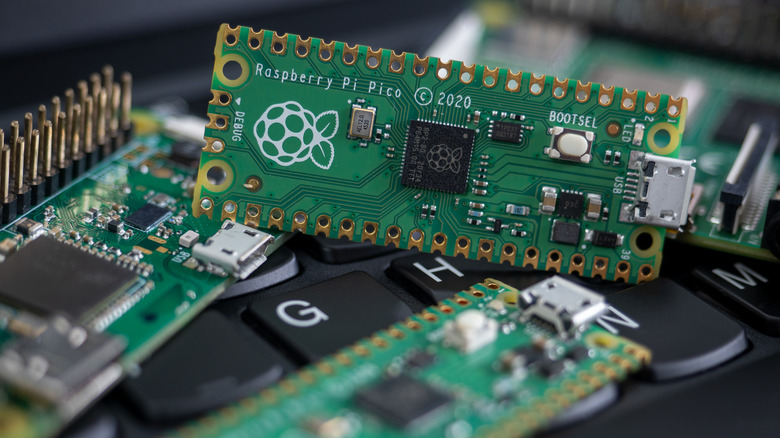Raspberry Pi Zero Vs. Raspberry Pi Zero 2 W: What's The Difference?
The Raspberry Pi has a rich history of developments since the first model shipped in 2012. Each generation has improved computing power and connectivity options, making it useful for demanding DIY projects. If you're not ready to undertake challenging projects, the Raspberry Pi Zero series offers entry-level specifications which are perfect for those getting started.
Priced $15 or less, the Raspberry Pi Zero and Raspberry Pi Zero 2 W are some of the cheapest models in the series, with a limited but capable set of hardware. Because of their simple build, the Zero series is more appropriate for Raspberry Pi projects that won't break the bank, as you'll have less processing power than other models. That being said, the Raspberry Pi Zero series stretches from a single-core CPU all the way to a quad-core CPU, so you can choose a model according to your power needs.
The Raspberry Pi Zero and Raspberry Pi Zero 2 W may be similar in size, but there are fundamental differences you need to be aware of, and the clue is in the names. Whether you're an educator, a student, or a DIY enthusiast, let's tackle the differences between these two models in the Raspberry Pi Zero series, so you can pick a model that meets your requirements.
What is the Raspberry Pi Zero?
The Raspberry Pi Zero is a super-affordable mini-computer to accommodate basic DIY tasks. The latest edition, version 1.3, costs about $10, making it ideal for newcomers who want to test drive the computer. In addition to its ridiculously low price, the board is also physically one of the smallest, falling behind the Raspberry Pi Pico Series.
The Raspberry Pi Zero offers basic specs making it suitable for simple projects. The board features 512MB of RAM, 40 GPIO pins, and a single-core Broadcom BCM2835 processor clocked at 1GHz. There's a handy micro-USB port plus a less useful mini HDMI port, though you can purchase a mini HDMI to HDMI adapter from Amazon for under $10. Version 1.3 also comes with an additional CSI camera connector, which is great for many cool projects you can do with a Raspberry Pi and a Camera.
Importantly, the Raspberry Pi Zero does not offer internet or LAN connectivity, meaning you may become stuck in many project settings. Bluetooth is also unavailable, so if you want to take advantage of these capabilities, it's worth upgrading. Fortunately, you can still stay in the Raspberry Pi Zero family of devices, keeping your costs low.
What is the Raspberry Pi Zero 2 W?
Raspberry Pi's Zero 2 W ('W' standing for Wireless) is the latest model available in the Zero series that offers improved specs while keeping the price low. The biggest hardware upgrade is the quad-core Cortex-A53 processor, which claims to make the board five times faster than its predecessor. The Raspberry Pi Zero 2 W shares the same Micro USB and Mini HDMI as the Pi Zero while maintaining a small size.
Without question, a major selling point of the Pi Zero 2 W is its onboard 2.4GHz Wi-Fi and Bluetooth 4.1 connectivity, perfect for many unexpected uses of your Raspberry Pi, such as making a wireless printer server.
Thanks to its improved power, the Raspberry Pi Zero 2 W can even act as a simple desktop computer. Using the MicroSD slot, you can easily run Raspberry Pi OS (formerly Raspbian) without any issues. Take note that web-browsing will struggle to work, however, due to its limited 512MB of RAM. If you want to explore the full potential of what Raspberry Pi computers can do, be sure to check out the latest model, the Raspberry Pi 5: a radical overhaul for the platform.
Which Raspberry Pi is best for you?
Before picking a Raspberry Pi, it's worth considering what types of projects you want to work on. For instance, if you have the latest Raspberry Pi Zero model, you could create a photo booth, but you'll struggle building a project like a Pi home security camera system without Wi-Fi connectivity. If either Wi-Fi or Bluetooth connectivity is a must, then pick the Raspberry Pi Zero 2 W.
Hardware requirements are another important area to consider. Both models only feature one USB data port, meaning you'll have to purchase a USB hub if you wish to connect more than one peripheral. The models' processors, however, are where things start to differ. Whereas the Raspberry Pi Zero 2 W offers a quad-core processor, reminiscent in old smartphones, the Raspberry Pi Zero is limited to a single-core processor. So, for tackling projects that require more than basic processing power needs, the Raspberry Pi Zero 2 W is a more sensible choice.
Prices for both models are reasonable. You can pick up the Raspberry Pi Zero for $5, and the speedier Raspberry Pi 2 W is priced at $15. If you're going to use your Raspberry Pi for more than one Wi-Fi or Bluetooth-enabled project, the Raspberry Pi Zero 2 W is a great deal.
Methodology
Given their cheap price tag, you may be tempted to rush into buying a Raspberry Pi, only to realize you're missing some essential capabilities. So, it's important to look into your specific needs, what processing power is required, and what connectivity options are available.
We've gathered information directly from Raspberry Pi's official website and collected expert opinions from trusted publications such as Tom's Hardware to give you the best idea of what these mini-computers have to offer. If the Zero models don't suit your requirements, we've mentioned a few of the latest models in this article, but you can also explore every current Raspberry Pi model (and their differences) for further comparison.
